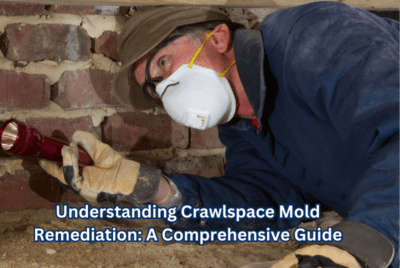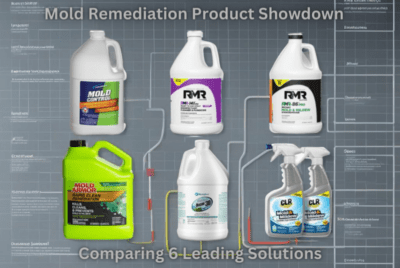Is Mold a Fungus? Unveiling the Mold Mystery
Mold: A perennial housekeeping headache. That stubborn visitor who overstays its welcome lurking in the moistest corners and crannies of your home. But who is this unwelcome guest? Is mold a branch from fungus family tree? Let’s delve into the biology behind this family nightmare.
The Fungus Tree
To determine whether mold can be classified under fungi, let us step back and look at the wider picture: fungi. It encompasses mushrooms, yeasts, mildews and molds among many other varieties within its domain. What makes them similar? They possess unusually designed cells and are able to get food from the earth.
Unlike plants which prepare their own meals through photosynthesis, fungi are parasites. They take advantage of others by secreting enzymes for digesting nearby organic goodies; it is like they are ultimate party crashers to have everyone munch on whatever comes their way in a buffet.
The Truth about Mold: It is Indeed a Fungus
But where does mold fit in this fungal fiesta? Mold is like that rebellious cousin sleeping on the couch—it’s indeed a fungus but has its own ideas on how things should be done. Mold releases its spores into the wind (also called drift). Once these invisible travelers find a cozy place with sufficient moisture plus nourishment, they settle down to create their empire of threads seen as those fuzzy patches to us.
Nonetheless, not all molds are alike having thousands of species with varied tastes and preferences. Some such as Aspergillus or Penicillium are commonly found in houses while there are others such as Black Mold (cue dramatic music) that gives toxicity to the party.
Why Mold is Difficult to Get Rid Of?
So you may be asking yourself why exactly mold seems impossible to evict. Well, it’s because of its way of life. Plants have certain requirements for their habitat – think light, soil and particular nutrients. On the other hand, mold can live almost anywhere and everywhere, anytime. It is like that roommate who can survive on the smallest breadcrumbs of organic matter. Just add some moisture and it’s all systems go.
This makes it a formidable enemy because its resilience allows it to just appear without notice at your home’s nooks and crannies. When it settles in, you know you have to get used to having a stubborn tenant whom you cannot easily evict.
Health Risks Associated with Mold Growth
However, there is more than the integrity of your house that is at stake—your health as well. Some molds are harmless but others? They are such spoilsports since they lead to allergies or even respiratory problems. For those individuals with weak immune system, mold forms an imminent danger as it is a health hazard just like that friend who always brings drama into parties.
And don’t forget what mold can do to your house if left unchecked. It acts like a tiny invisible demolition squad eating through your walls and insulation. If untreated, it could undermine your building’s structural soundness while at the same time giving more room for more molds to breed.
Detecting Mold Growth
Therefore, how do we find out that our party has been crashed by molds? Keep looking (and smelling) for signs like damp musty odor or fuzzy patches appearing on surfaces around you. Moreover, if your family suddenly gets sniffles whenever at home then know mold might be this unwelcome visitor everyone should blame.
Fighting Mold Growth
Are you ready to send mold on its way? Here is a two-step plan: remove the mess that has already occurred and correct the conditions that led to it in the first place. For small infestations, you might choose to wear a hazmat suit and handle it yourself. However, for the more critical kinds of molds, the best thing to do is call in experts who are conversant with various ways of getting rid of it.
Prevention: The Key to a Mold-Free Home
However, how does one prevent this? Keep your home dry; repair leaks as soon as they occur and ensure there is proper air circulation. In addition, when renovating, use materials that are not attractive to baby mold.
The Main Point
So is mold a fungus? Undoubtedly! And just more than being an annoyance—it can possibly cause health problems and ruin your house. But armed with knowledge and a proactive approach, you can keep your home free from moulds while guests (at least invited ones) will have no breathing difficulty at all.
FAQs
1. How does mold affect indoor air quality?
Mold can release spores and produce allergens or toxins that, when inhaled, can lead to respiratory problems and poor indoor air quality.
2. Can mold grow in dry environments?
While mold thrives in moist environments, some species can adapt and grow in drier conditions. Controlling humidity levels is still essential to prevent mold growth.
3. Are all molds harmful to humans?
Not all molds are harmful, but certain species can produce toxins or allergens that may cause health issues, particularly in susceptible individuals.
4. Can mold be completely eliminated from a building?
While it may not be possible to eliminate all mold spores entirely, proper prevention measures and effective remediation can significantly reduce mold growth and its associated risks.
5. What are some natural remedies for mold removal?
Natural remedies such as vinegar, hydrogen peroxide, or tea tree oil can be effective for small-scale mold removal. However, professional remediation may be necessary for extensive mold infestations or in cases where health risks are a concern.
These studies provide valuable insights into the topics discussed in this article, including mold contamination, health effects, and the classification of fungi.
Study 1:
Title: “Fungal Contamination of Building Materials and the Aerosolization of Particles and Toxins in Indoor Air and Their Associated Risks to Health: A Review”
Authors: by Mohamad Al Hallak, Thomas Verdier, Alexandra Bertron, Christine Roques and Jean-Denis Bailly
Published in: NDPI, 25 February 2023
This study provides an in-depth review of fungal contamination in residential buildings, including the presence of mold and its impact on indoor air quality. It discusses the health effects associated with exposure to mold and mycotoxins, emphasizing the importance of accurate identification, prevention, and remediation strategies.
Study 2:
Title: “High-level classification of the Fungi and a tool for evolutionary ecological analyses”
Authors: Leho Tedersoo, Santiago Sánchez-Ramírez, Urmas Kõljalg, Mohammad Bahram, Markus Döring, Dmitry Schigel, Tom May, Martin Ryberg & Kessy Abarenkov
Published in: Springer Link 16 May 2018
This study explores the classification of fungi and the challenges associated with using molecular approaches for their identification and taxonomy. It discusses the complex nature of fungal evolution, the need for accurate classification systems, and the importance of understanding the relationship between different fungal groups, including molds.




